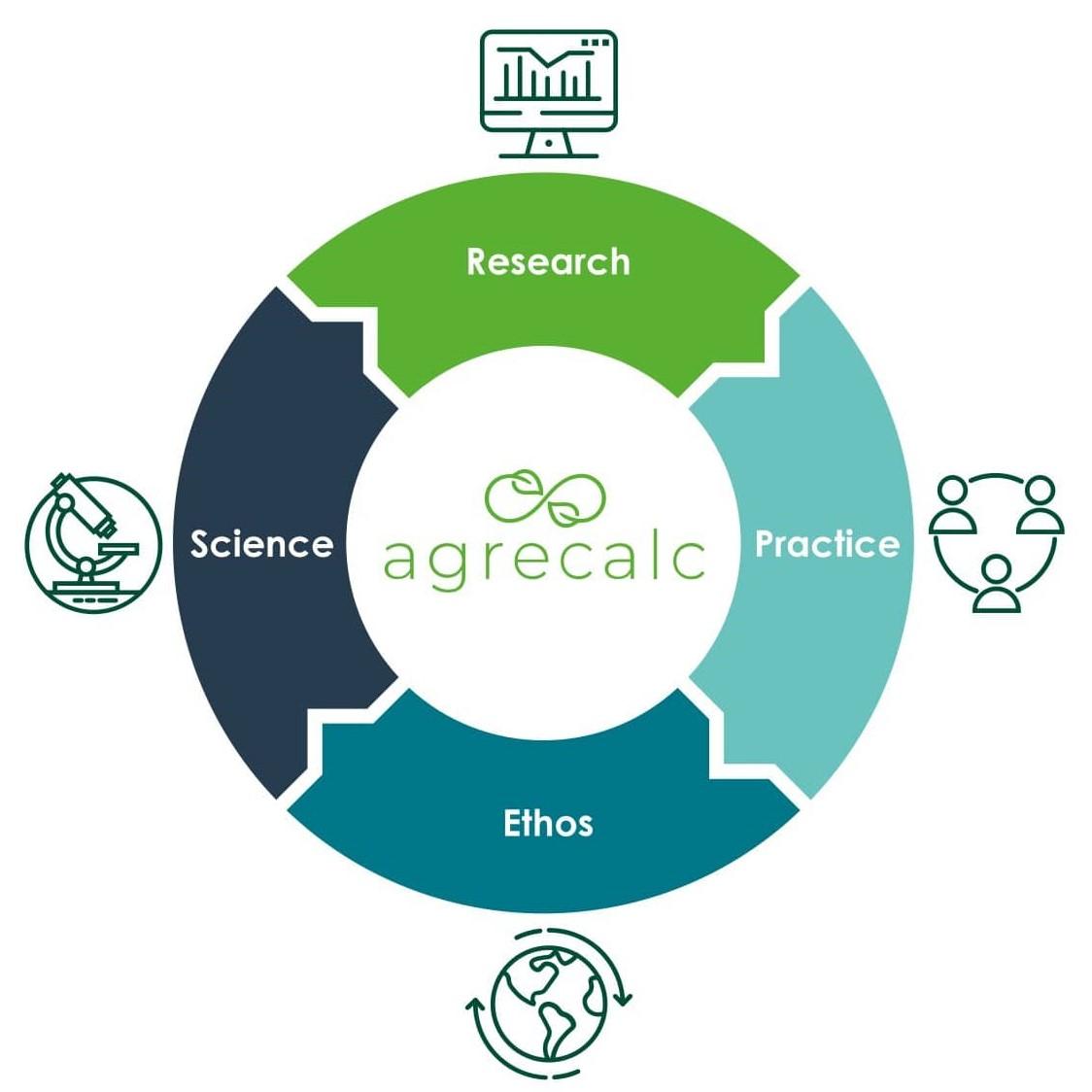Agrecalc is a carbon reporting tool developed by combining the on-farm practical expertise of SAC Consulting with world-class agricultural science and research of SRUC.
What started as a small tool to help calculate the carbon footprint of imported lamb in 2007, grew into a fully-fledged Platform as a Service. Agrecalc is a precise instrument that offers both breadth and depth of on-farm and through-the-supply-chain calculations of carbon footprint.
Agrecalc went online for farmers to use in 2014, and it has since been collating farm benchmark data from thousands of farms. The carbon reporting tool has been used as the designated software to deliver carbon audits under the Scottish Farm Advisory Service (FAS) (2016), the Beef Efficiency Scheme (BES) (2016), the Scottish Farm Business Survey (2018) in Scotland, as well as several government programmes in Northern Ireland and Wales since 2020.
In addition to continuous support of these schemes, Agrecalc is recognised as the preferred carbon calculator in emerging government programmes such as Preparing for Sustainable Farming (PSF) in Scotland, DEFRA’s Future Farm Resilience (FFR) programme in England and with AHDB’s Farm Excellence Platform (FEP) across the UK.
As part of a RESAS (Rural Environment Science and Analytical Services Division of the Scottish Government)-funded ongoing research project, our tool is constantly updated to reflect the most recent research. Agrecalc is proud to support research projects and scientific studies that aim to better understand the global challenges facing the agricultural industry and supply chain – from food security, biodiversity, changing agricultural practices and resilience and adaption to climate change.
Our research team currently support research, MSc and, PhD student projects at SRUC, Edinburgh University, Glasgow University, Cranfield University, and The University of Teramo, among others. Some of our current research projects include collaboration with Harper Adams University, Oxford University, and a joint industry-academia group funded by DEFRA.
The scientists, consultants and developers who work on Agrecalc carbon reporting tool strive to constantly upgrade the calculator according to the most up-to-date available research results and recommendations.
The Agrecalc team is committed to maintaining a consistent, defensible model of farm emissions based on the latest published reporting standards and scientific research. Our central model is based on greenhouse gas reporting guidelines published by the IPCC for national inventories. We also incorporate more specific national figures from the UK National Greenhouse Gas Inventory.
Our methods are certified by PAS 2050:2011, a standard for the robust quantification of product carbon footprints. In the interest of transparency, the page Our modelling methodology for carbon footprinting details the methodologies we use to quantify farm greenhouse gas emissions.
Agrecalc carbon reporting tool is a resource efficiency calculator that provides independent carbon footprint assessments. We only employ evidence-based, verified scientific methods. We believe that by maintaining our independence, we can better serve our customers with unbiased advice, reliable products, and sustainable practices.
We want to ensure that our actions reflect our commitment to our customers, partners, and employees. We prioritise making decisions based on our own judgment and principles. We encourage dialogue and feedback to continuously improve our practices. We build trust and accountability, enabling everyone to make informed decisions and contribute meaningfully to our collective goals.
We celebrate strong, supportive partnerships across the entire agri-food supply chain. We strive to break down silos, to help users harness their data, we embrace diverse perspectives to leverage the unique strengths and talents of everyone involved, to create solutions together that meet the needs of a net-zero future. Like a murmuration of birds, we work with and respond to our environment to achieve greater efficiency, and success with our staff, partners and other collaborators.

We are committed to thinking creatively, embracing cutting-edge technologies and seeking the need for change and continuous improvement. Innovation at Agrecalc is a collaborative endeavour that involves every team member. New ideas are welcomed and nurtured, so that we can develop transformative solutions that not only meet the needs of today but also anticipate the demands of tomorrow.
Adaptation, resilience and sustainability guide our vision to sustain our organisation, purpose, and values capable of thriving in the face of challenges and uncertainties. We promote resource efficiency to ensure that growth is not only profitable, but also environmentally and socially responsible. This mindset aims to equip everyone with skills to withstand possible future shocks and weather the storms.
We are an essential ingredient in the mix across supply chains – for the success of the food-producing business and its management practices. We balance risks and responsibilities to ensure long-term success. Every value we espouse comes together in this one, strengthening our commitment to our customers, partners and employees alike.